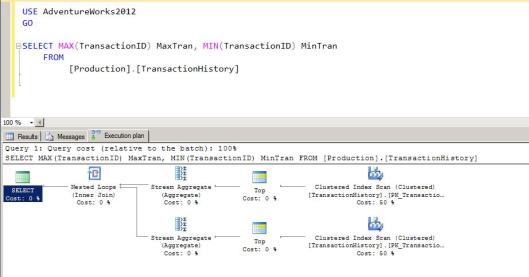Tags
26 performance tuning questions and solutions, How to tune SQL queries, Interview questions for SQL Server Performance Tuning, Is a Index Scan always a Index Scan?, Looking for SQL Optimization Interview Questions, Or An Index scan operator always reads all pages from leaf level?, performance sql server, Performance tips for faster SQL queries, Performance Tuning, Performance Tuning for SQL Server, Query Optimization, Query Performance Tuning, SQL Complex Queries, SQL Optimization Interview Questions, sql performance, sql performance and tuning, sql performance explained pdf, sql performance tips, SQL Performance Tuning, sql performance tuning and optimization, sql performance tuning interview questions, sql performance tuning tips, SQL Query Optimizer, SQL Query Tuning or Query Optimization, SQL SERVER Interview questions, SQL server optimization interview questions and answers, sql server performance query, sql server performance slow, SQL Server Performance Tuning, SQL Server Performance Tuning Tips, SQL SERVER Tips, SQL Tuning Overview, Tips for SQL Database Tuning and Performance, Top 10 performance tuning tips for relational databases, What controls an Index Scan to read all pages from leaf level?
What controls an Index Scan to read all pages from leaf level? Or An Index scan operator always reads all pages from leaf level?
In continuation in the performance series, let’s check whether an index scan operator always reads all the pages from the leaf level or not. Well, not always. It depends on the query you have written. If you are using TOP, MAX or Min in your query then your query will not read all the pages. These operators control the index scan operator and once their requirement is fulfilled, then they just says that the index scan just go away I am done. This is like this because your logic flows from left to right and your data flow from right to left. Let’s go through some of the examples and try to understand what’s going on behind the scenes.
Let’s check out a query with TOP Operator
-- USE AdventureWorks2012 GO SELECT TOP 5 DepartmentID, Name, GroupName, ModifiedDate FROM [HumanResources].[Department] --
Now add the actual execution plan and execute the query. Below is what we got. By the ways in this table ([HumanResources].[Department]) we have 16 rows.
Now what happens internally here Select operator asks do you have any row for me, Top says that I don’t have let me ask scan operator, Hey scan operator do you have any rows for me. Now the scan operator says yes I do have row for me. Now in our query top expression is 5, now when the top operator consumes 5 rows it says hey scan I don’t need any more rows, just go away and breaks the execution and doesn’t return any more rows to the select operator. Now this means our query execution is done and we got 5 rows as output.
Okay one more example let’s check out a query with MIN & MAX Operator-
This second query returns the minimum and the maximum of the column TransactionID. TransactionID column has a Clustered Key column on it. Let’s examine the execution plan. Here we have clustered index scan 2 times only to retrieve the maximum and minimum transaction id from transaction history table.
The explanation given for the top query applies here also. Top operator here consumes first row from the forward clustered index scan in case of minimum transaction id and first rows from a backward clustered index scan for maximum value, After that we are using nested loop join to join these values and then a stream aggregate. The stream aggregate is used to group rows by one or more columns and used to calculate aggregation expression.
Summary
Scan is not really always a complete scan in the execution plan. Operators like Top, Min and Max can restrict the full scan of the table.
That’s all folks; I hope you’ve enjoyed learning this article, and I’ll see you soon with more “Performance Tuning” articles.
Thanks!
Pawan Kumar Khowal
MSBISKills.com



You must be logged in to post a comment.